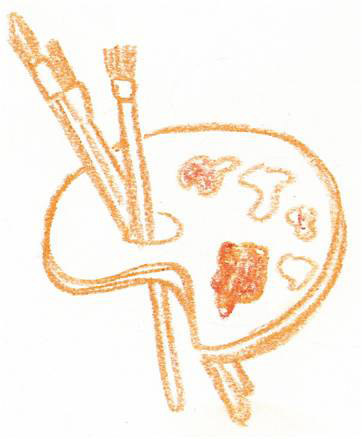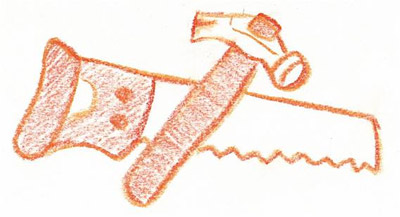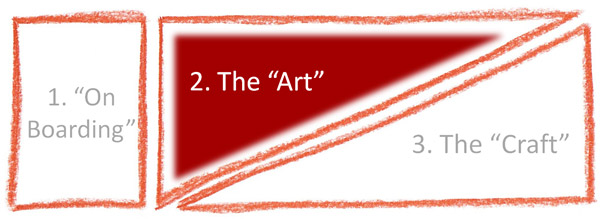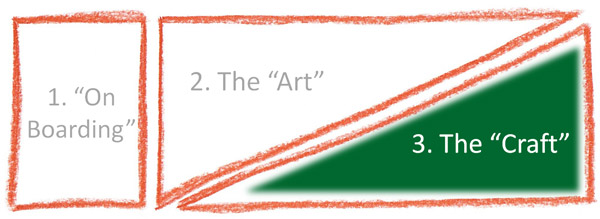
The Organizational Backbone Process
What is the Organizational Backbone?
 The backbone is the central element of a skeleton. It is the central axis from which every major movement of the body originates. Without an intact backbone, almost any movement of the body is either painful or not working at all. Taking this metaphor of the backbone to an organization, the so-called Organizational Backbone is its fundament; it allows a company to focus its energy. It generates peak alignment, orientation, focus, and concentration of efforts in an organization. It is the premise to unleash an organization’s full potential and to create the highest joint results and effects throughout the organization.
The backbone is the central element of a skeleton. It is the central axis from which every major movement of the body originates. Without an intact backbone, almost any movement of the body is either painful or not working at all. Taking this metaphor of the backbone to an organization, the so-called Organizational Backbone is its fundament; it allows a company to focus its energy. It generates peak alignment, orientation, focus, and concentration of efforts in an organization. It is the premise to unleash an organization’s full potential and to create the highest joint results and effects throughout the organization.
It is a top-down process, which in itself is deeply rooted in organizational comprehension and wisdom.
A coherent Organizational Backbone gives all actions a common goal, all staff members a clear orientation, and, far more importantly, an identity and propulsion.
In the following situations we have successfully applied the Backbone Process:
- When an impelling VISION for the company, a business unit, a team, etc., needs to be developed. When a STRATEGY has to be worked out or reviewed.
- When there is no deeper and united understanding about what it is the organization and its parts are aiming for.
- In difficult business circumstances where alignment, orientation, focus, and concentration on the ‘essential’ are critical for success.
- When employee alignment to the organization has to be built. The employee commitment grows when they feel congruent with the PURPOSE, VISION and MISSION of the organization; when they believe the organization is on the right track.
- When momentum in the cooperation between colleagues, teams, departments, or businesses is scattered. Whenever people are not pulling in the same direction.
- When alignment to the organizational values needs to be created so that the employees feel ‘at home’ in the organization and can fully dedicate themselves to work. For this to happen the employees need to feel that the values of the organization are in line with their personal values.
Here in these and other situations, the Organizational Backbone Process is highly effective. A coherent Organizational Backbone gives all actions a common goal, all employees a clear orientation, and far more importantly, identity and propulsion.
Elements of the Organizational Backbone Process
The Organizational Backbone is a top-down process, which in itself is deeply rooted and reflected in the organization’s understanding and wisdom of itself. Critical for success is the EMT’s desire for active involvement, commitment, and ownership of the process. This is crucial for the impact to be achieved. In its’ essence it consists of 3 central elements which build successively upon each other:

 The executive management team “On-Boarding”
The executive management team “On-Boarding”- “The Art” of the organizational backbone
- Executive Management Team building
- Developing a joint executive organizational understanding
 “The Craft” of the Organizational Backbone –
“The Craft” of the Organizational Backbone –
- Generating buy in for the Organizational Backbone elements inside the organization
- Implementing the elements within the organization
1. Onboarding: The why and how?
 Onboarding is central for building up (Leadership / Organizational) alignment and commitment for the Backbone Transformation Process.
Onboarding is central for building up (Leadership / Organizational) alignment and commitment for the Backbone Transformation Process.
The Executive Management Team (EMT) onboarding is the first vital step in the 3 steps to change model. It is the indispensable requirement that the relevant ‘Key-Decision Makers’ ensure the necessary political will and commitment to carry out the Organizational Backbone Process and implement its results!
Without this political will and commitment neither the following ART- nor CRAFT-Step will become effective. We have experienced that the alignment and focus of the executive management team is the sole greatest positive influencing factor when it comes to driving organizational changes. Without the profound commitment and willingness by the EMT to engage and drive the corresponding leadership tasks, the backbone approach is set to fail. For this reason, the key initial step of the Organizational Backbone Process is the executive team onboarding session.
In this onboarding session the executive management team is led into a generative dialogue on the following topics:
- Why should we (as the executive management team) make this effort?
- What is a strong attractive future outlook for our organization?
- What is the Organizational Backbone process and does it serve our needs?
- What are the external conditions that we need to consider?
- Do we – as the executive management team – have the will, the commitment, and the resilience necessary to carry out this process?
If in this generative dialogue a shared understanding and joint WILL is reached inside the EMT, the Organizational Backbone process is ready to be launched.
2. The ‘Art’ of the Organizational Backbone
 Building a Joint Organizational Understanding
Building a Joint Organizational Understanding
 The process itself is an intense united inquiry and processing of the organizational reality done by the Backbone Team. A team composed of key players out of the organization including relevant managers as well as multi-plyers. The backbone process is strongly linked and rooted in the whole organization and all of its hierarchical levels. When the team has worked itself through the Organizational Backbone Process it will have gained, a clear shared understanding and will about the core elements of organizational focus and direction. As a result, it operates inside the organization with one sense of organizational- purpose, strategy, ambition, and with one set of values.
The process itself is an intense united inquiry and processing of the organizational reality done by the Backbone Team. A team composed of key players out of the organization including relevant managers as well as multi-plyers. The backbone process is strongly linked and rooted in the whole organization and all of its hierarchical levels. When the team has worked itself through the Organizational Backbone Process it will have gained, a clear shared understanding and will about the core elements of organizational focus and direction. As a result, it operates inside the organization with one sense of organizational- purpose, strategy, ambition, and with one set of values.
Let’s have a look at the actual backbone vertebrae of this process. These basic elements forming an Organizational Backbone are adapted from nowhere Group Ltd.:
- History / Legacy (Where do we come from as an organization? What has made us successful so far?)
- Facts (What are our current strengths and weaknesses as the organization we are?).
- Brand (What do we stand for? How are we perceived by our environment?)
- Purpose (What is our organizational purpose beyond making money? What is it we and only we can bring to this world?)
- Values (What are our constituent values? What values do we need to live in order to bring our organizational purpose to life?)
- Ambition (What is our organization’s greatest possible future? What is it we want to bring to life? Where do we want to go as an organization?)
- Pathway (How do we get there? What are the actions and measures we need to take, to achieve our organizational Ambition?)
One key factor of the Backbone Team’s exploration is that they have to draw their own conclusions from the gathered information and do not get pre-interpreted information from a consultant or project team. It is their mutual struggle for a joint interpretation and perception of the organizational reality that is at the core of the Organizational Backbone.
 3. The ‘Craft’: The implementation of the Organizational Backbone inside the organization
3. The ‘Craft’: The implementation of the Organizational Backbone inside the organization
 The further the ‘Art’ process advances the more the ‘Craft’ process, which is the implementation of the Backbone into the organization, needs to be focused on. The knowledge, comprehension, wisdom and insight gained in the Backbone Team needs to be thoughtfully introduced and induced into the organization.
The further the ‘Art’ process advances the more the ‘Craft’ process, which is the implementation of the Backbone into the organization, needs to be focused on. The knowledge, comprehension, wisdom and insight gained in the Backbone Team needs to be thoughtfully introduced and induced into the organization. This organizational familiarization has to be prepared and carried out in such a way that the Organizational Backbone elements can be digested and processed without being rejected. The organization, its units, teams and individuals need to get the chance and time to draw meaning out of the Organizational Backbone for their work and for themselves.
This organizational familiarization has to be prepared and carried out in such a way that the Organizational Backbone elements can be digested and processed without being rejected. The organization, its units, teams and individuals need to get the chance and time to draw meaning out of the Organizational Backbone for their work and for themselves.
What is important to point out is that the implementation, the ‘Craft’ of the Organizational Backbone, is demanding and long-lasting work. If the management is not prepared for this effort, the enormous potential-, which lies in the Organizational Backbone process-, will not be fully realized. To anchor and bring the OBB alive in an organization, the Management has to keep it prominent on the organizational agenda over a period from 6 to 12 months.
